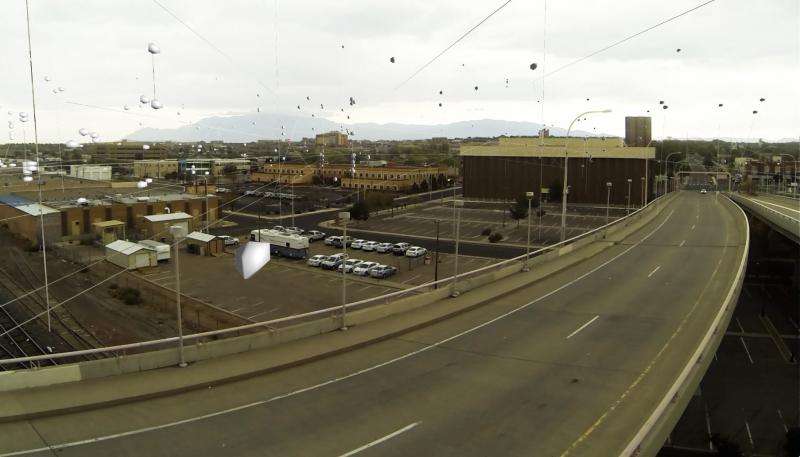Professor develops wall displaying info gleaned from social media, networks

Assistant Professor of Architecture Alex Webb is not your average T-square, model-building architect. He uses the design skills and tech savvy he gained through an architectural education in new and innovative ways.
Using computational design workflows, Webb looks to evolutionary intelligence and algorithmic models as the generator of architectural concepts. Programming languages are an integral part of his design process, and through these Webb works to codify environmental data, urban behavioral data, and other big datasets to integrate them into architectural systems.
Webb is currently working on a digitally responsive projection wall that may startle people near it. The wall will sense when a smartphone is around and map the user's social media data and networks. "People need to know just how readily available information about them is," he said. When individuals walk by the wall, it "retrieves information about them from their cell phones. Information from Facebook and Twitter is harvested and processes," he said. That information would light up on the Responsive Wall.
In the case of the Big Data Wall, the information would be given voluntarily by an app the users would download. The app is a cheaper, easier version of what happens on a consistent basis – phones serve as tracking devices that can be cross-referenced with credit card statements, computer usage and social media information to determine the identity and location of the user.
Social media is a critical component of this equation and one that's easily accessible. Calling it "media for urban behavior," geo-located tweets allow information to be gleaned about people and how they behave or respond to an urban context. "They believe a lot of their information is private, but it isn't," he said.
Webb is into data mining – taking large sets of data and mining it for information about senders and their environment. He said that Twitter's data for 10 days is readily accessible, but that they sell data older than that. "My students and I used technology to record tweets as they happen. In two months, we collected 1.3 million tweets. Twitter is has more geo-located information than Facebook," he said, adding that they were able to identify Albuquerque's local favorite places. "We didn't know who sent the tweets, but we did get good site information," he said.
Architects might be interested in this type of data mining because they generally need to gain input from a neighborhood or community when it comes to designing plans and structures in their midst. It could expedite access to needed information.
Webb used the technology while working on his master's in architecture at Southern California Institute of Architecture (SCIArc). For his thesis project he developed used the environmental data of Pasadena to drive the form of a Mars rover testing facility.
"Environmental data can also drive the design of a building – temperatures, solar angles, and such inform in a way that creates an emergent design process." Taking the numeric information, he wrote code. "The data shows how the building would perform, rather than look. In a way, the building designed itself," he said.
The process leaves Webb with some questions. How can big data inform a built form? Can it? Should it?
He often has questions, but sometimes he finds answers.
He used data mining in response from the City of Albuquerque. The School of Architecture and Planning fielded a request from Sherri Brueggemann of public art.
"She wanted to know if social media could help make a case for why public art is important. We wanted to explore the importance of social media, its relevance, in the context of public art. We were establishing if public art is good and gauging its benefit for the urban condition," Webb said.
He said that a few students found metrics that show the way cities value public art and open space.
Homing in on Albuquerque, they explored which neighborhoods would be greatly affected by an increase in public art. "What we determined is that the Kirtland area is ripe for an influx of public art," he said.
Coincidentally or not, that's exactly where Brueggemann wanted to put it. "The data we gave her was useful enough for Sherri that she invited us to the public art board meeting," he said.
Webb got satisfaction from knowing that applying the data mining techniques in a real world test yielded valuable results. "We did this exercise in graduate and undergraduate design studios that are part of the InnovateAcademy," he said.
Provided by University of New Mexico




















